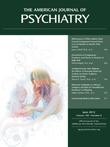This book provides a comprehensive summary of stimulant dependence and treatment for stimulant use disorders in a clearly written and well-organized manner. It is an excellent resource for clinicians interested in more in-depth information about the history, pharmacology, and management of stimulant dependence than the information found in general psychiatry or general substance use disorders textbooks. The book is well thought out and well edited such that the chapters flow logically, there is minimal redundancy of information, and most of the important areas are covered. Each chapter ends with a bulleted section titled “Key Clinical Concepts,” which synthesizes the important information in the chapter succinctly, increasing the value of the volume as a reference.
Chapter 1 covers epidemiology and psychiatric comorbidity. This chapter goes beyond simple regurgitation of data concerning the geographic areas most affected by stimulant use to provide information about legal, cultural, and political issues that have affected trends. This approach is both interesting and thought-provoking. The section on psychiatric comorbidity is somewhat superficial; however, the topic is well covered in a number of other volumes.
Chapter 2, titled “The History, Use and Basic Pharmacology of Stimulants,” is outstanding. It begins with a general overview of the terminology and neuropharmacology of drugs of abuse and then moves into specific sections addressing cocaine, amphetamine, and methamphetamine independently. Chapter 3 provides an overview of the diagnosis and assessment of stimulant abuse and dependence. It covers the subjective, behavioral, psychiatric, and physical effects of stimulants. DSM-5 criteria as they apply to stimulants are also discussed. In addition, developmental, gender, and cultural differences in presentations are reviewed.
Chapter 4 provides a review of data supporting a variety of behavioral interventions for stimulant dependence. Appropriately, much of the chapter is devoted to an in-depth description of contingency management, which is arguably the most efficacious treatment to date for stimulant use disorders. The authors also discuss cognitive-behavioral therapy, motivational interviewing, and group counseling. Some attention to marital or family therapy in the treatment of stimulant dependence and to treatment for special populations (e.g., adolescents, gender-specific treatment) would have improved this chapter. Pharmacotherapy is discussed in chapter 5. This chapter is brief, reflecting the lack of success to date in finding an efficacious pharmacotherapeutic treatment for stimulant dependence, but the main avenues of investigation and promising avenues for future development are identified.
Chapter 6 addresses polydrug abuse among individuals with stimulant use disorders. This comprehensive chapter is important because few individuals are dependent on stimulants alone. Similarly, the chapter on medical comorbidity and HIV (chapter 7) is important because medical comorbidity, which is sometimes directly associated with drug use or with lifestyles commonly associated with stimulant use, is often present in individuals with stimulant use disorders.
In summary, this is a well-organized book that provides practical and useful information for anyone involved in the treatment of individuals with stimulant dependence. The authors have done an excellent job of synthesizing the most current information in a manner that is both compelling and a pleasure to read.

